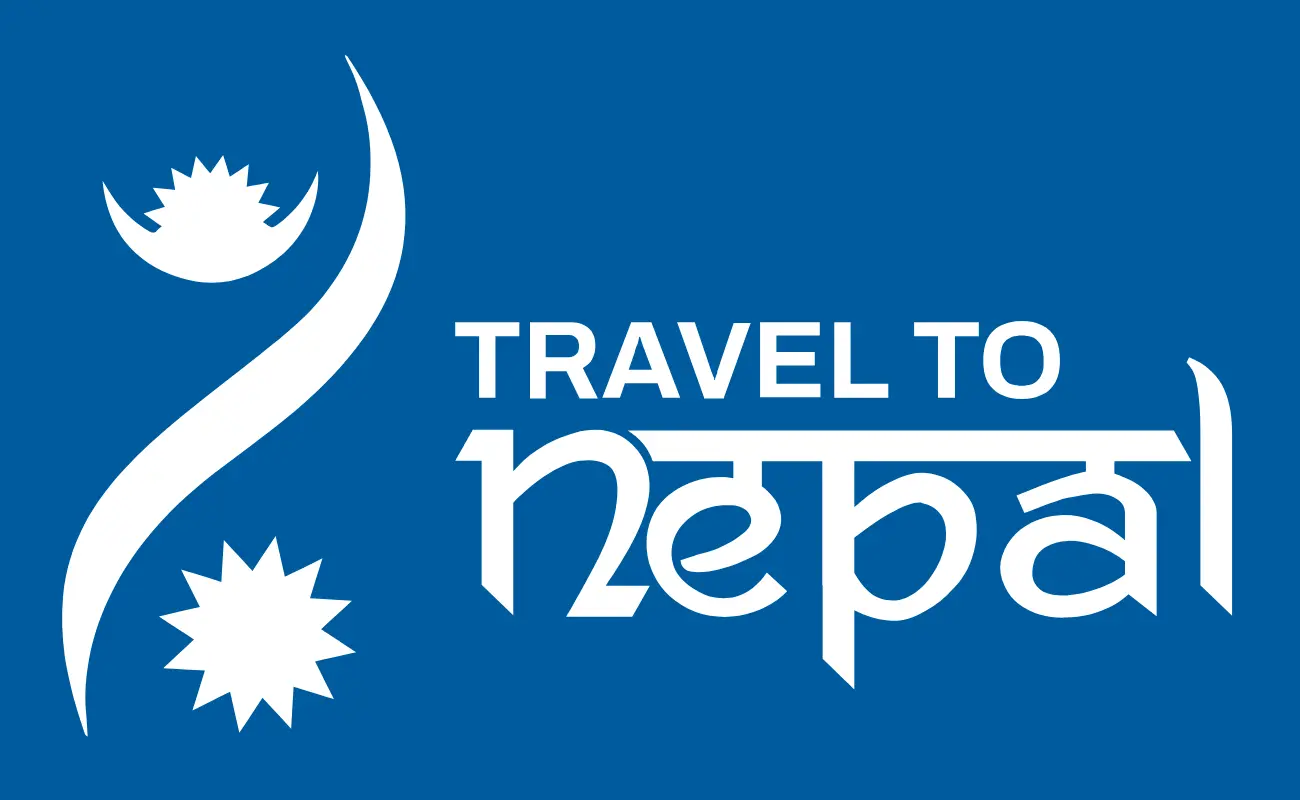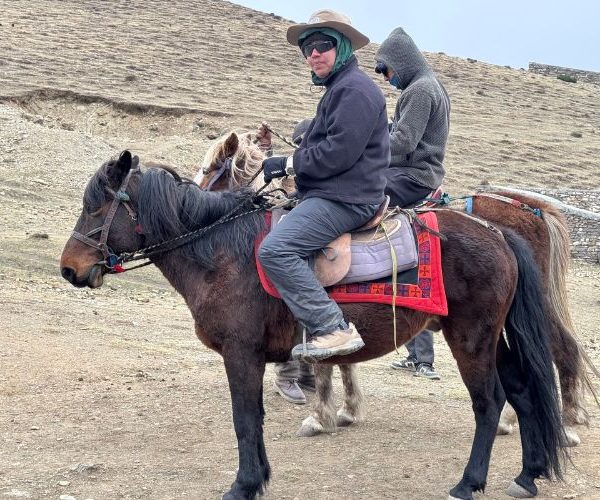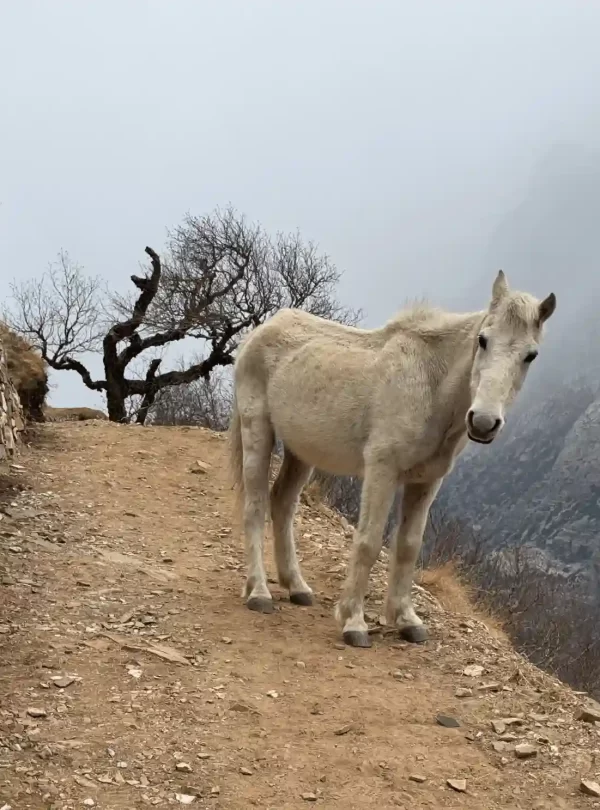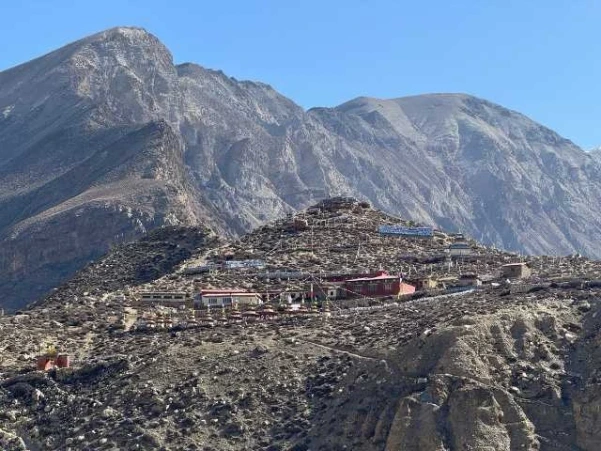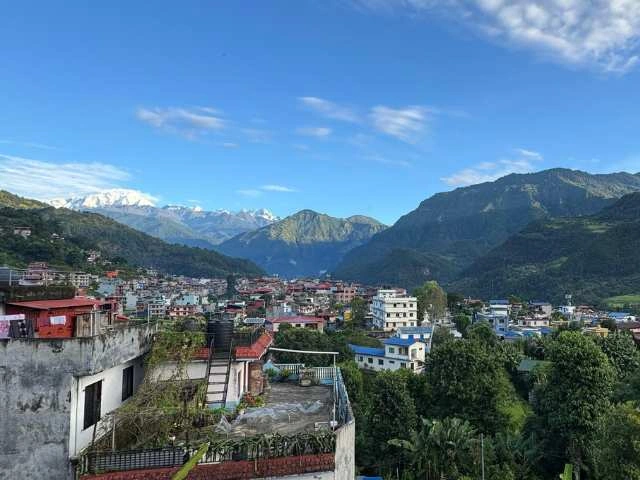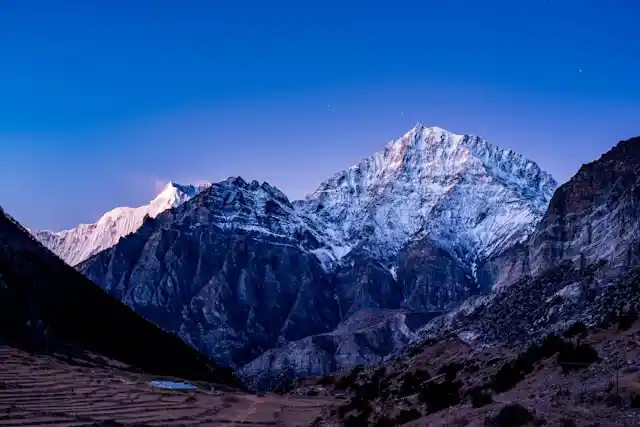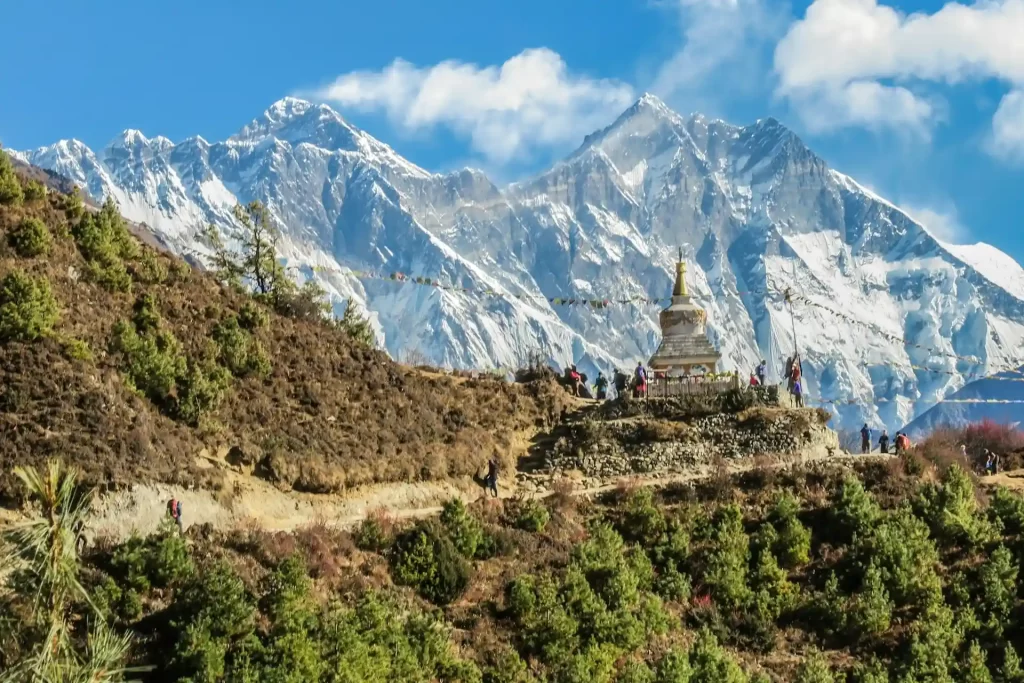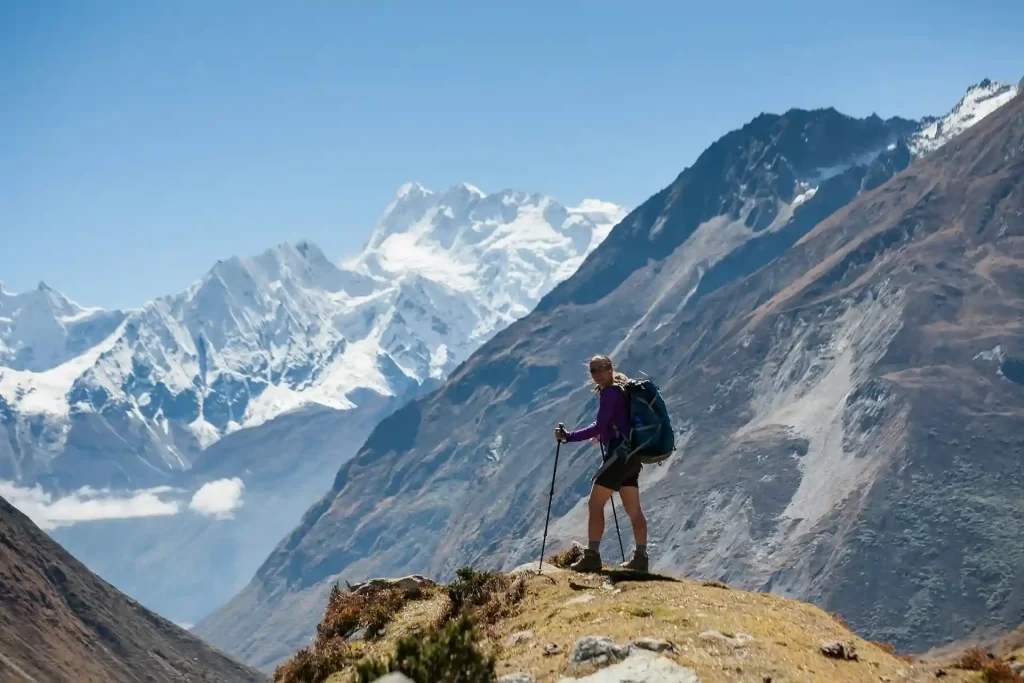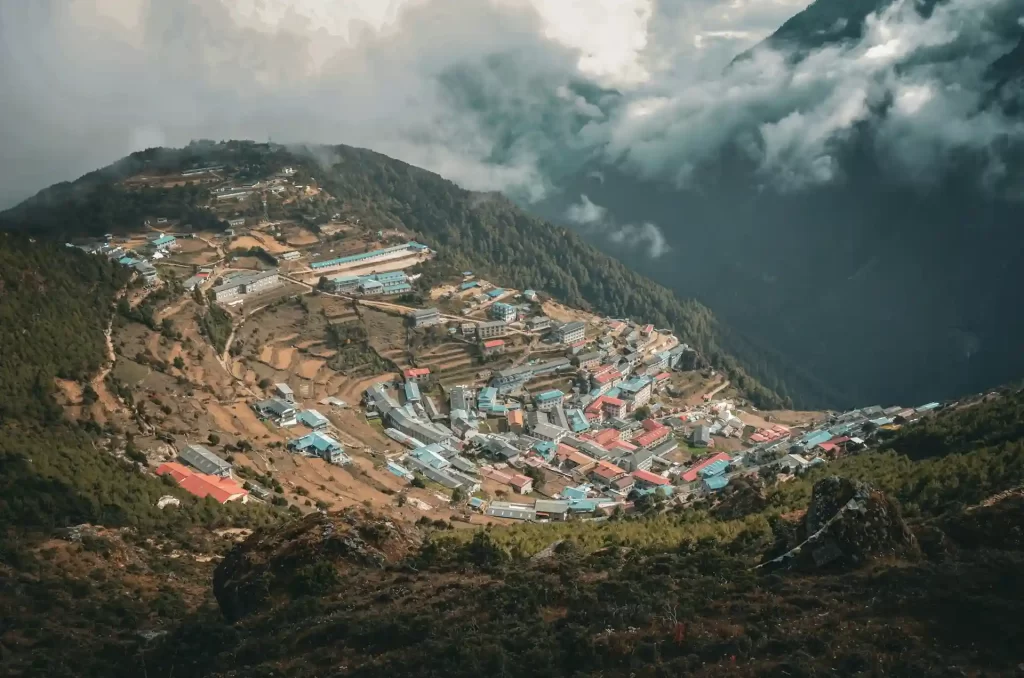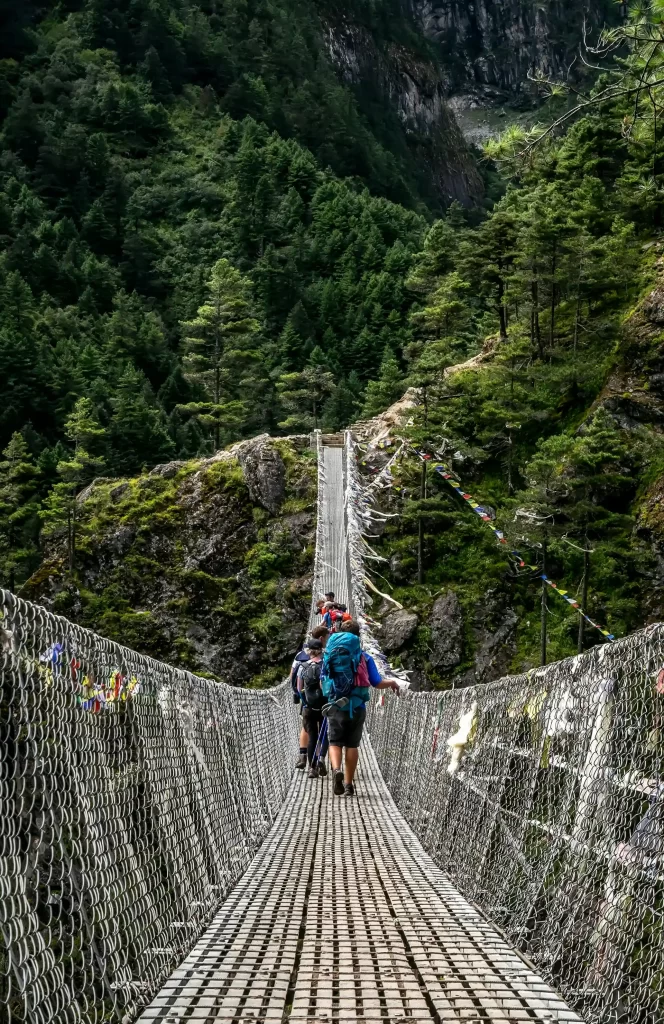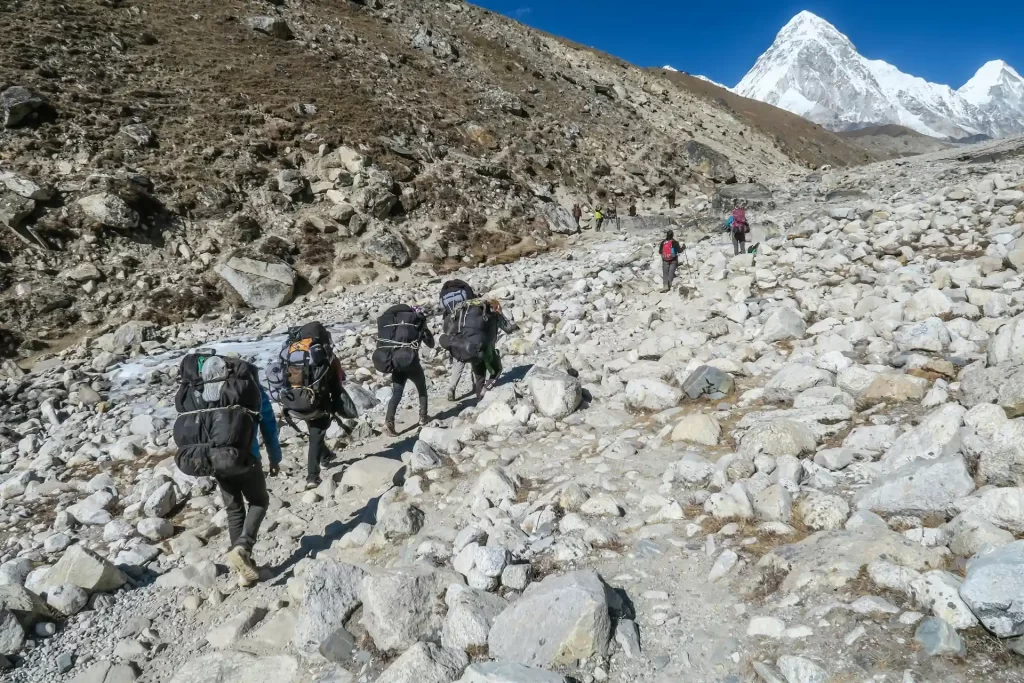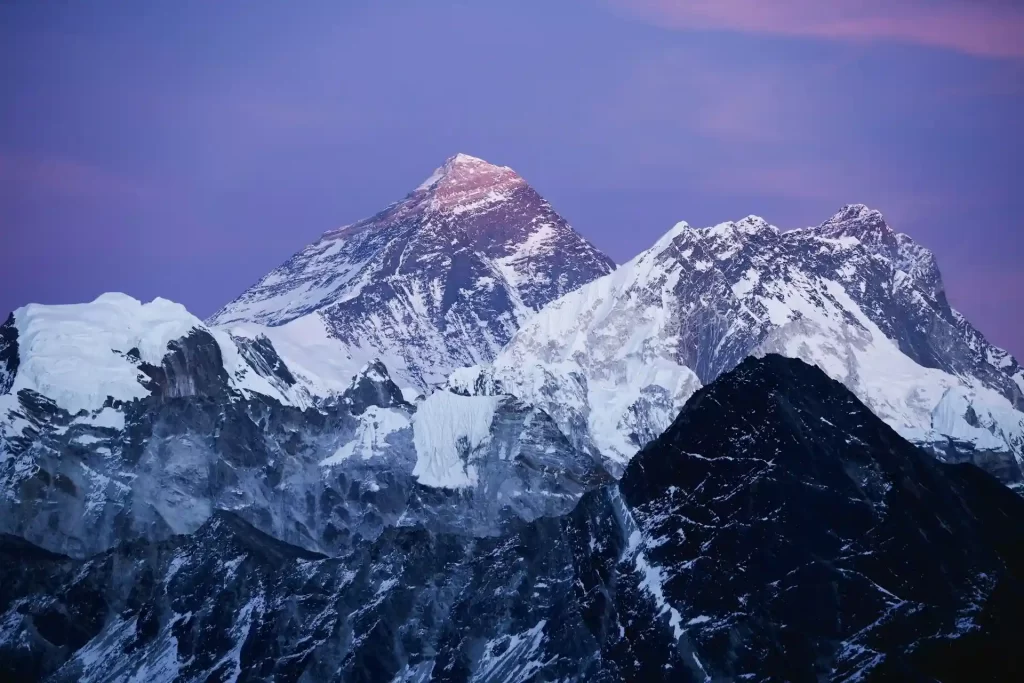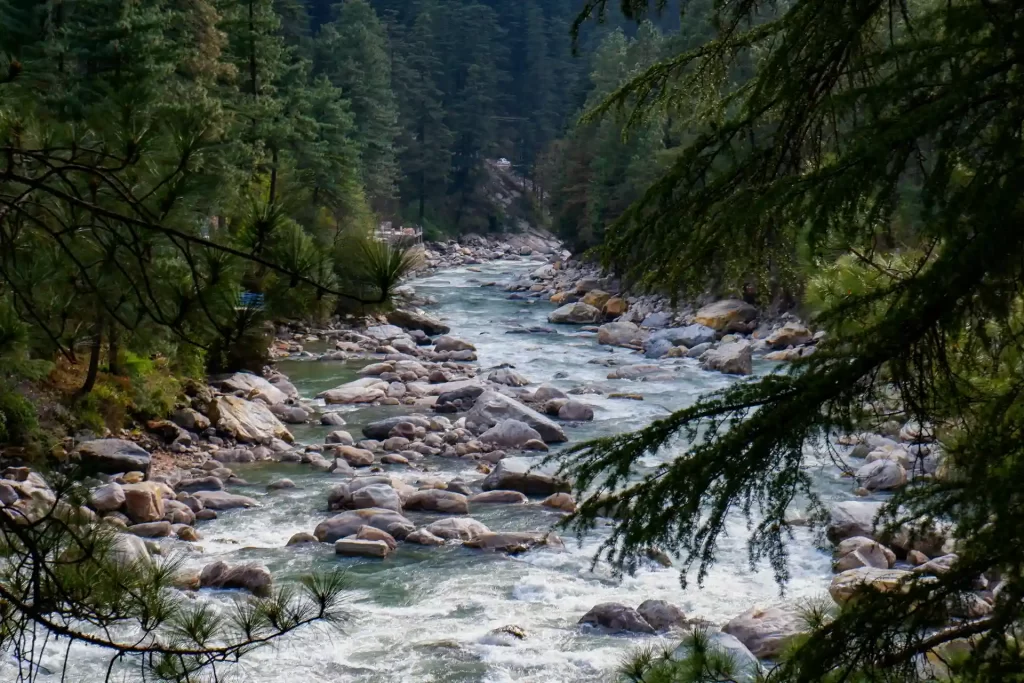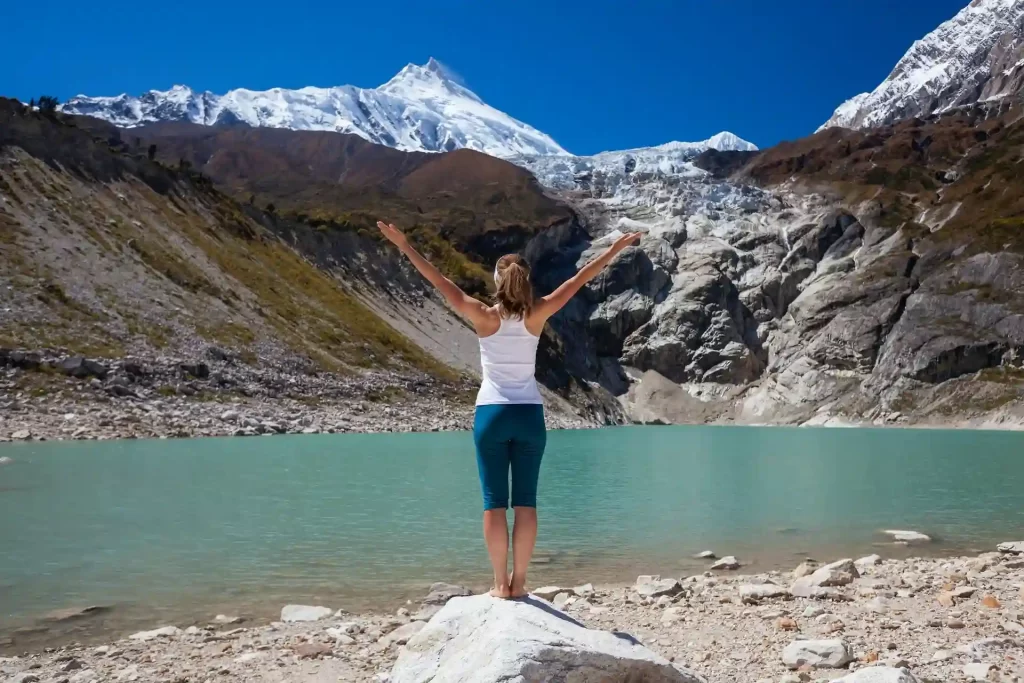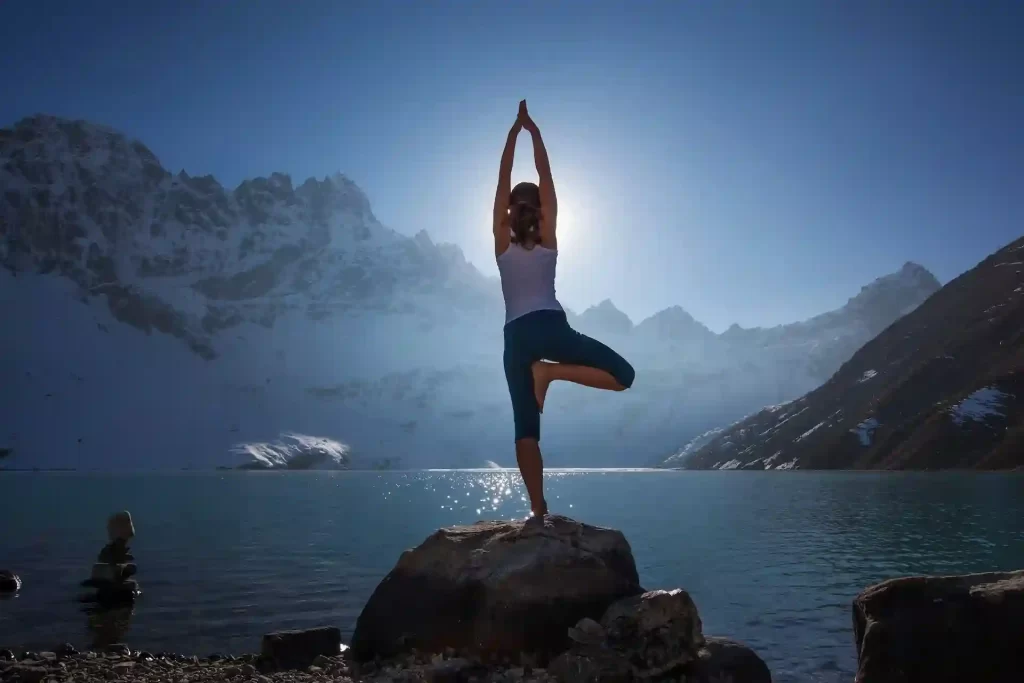This 10-day horse riding itinerary in Nar Phu Valley combines high-altitude adventure, horseback thrill, solitude, and cultural immersion. The program allows for exploration without the fatigue of continuous walking, offering a new way to experience Nepal’s mountains.
Trip Info
-
Quality Teahouses
-
Kathmandu
-
Spring & Autumn
-
5320m
-
Basic English-Speaking
Trip Overview
This equestrian trek passes through barren Himalayan landscapes and historic villages like Nar and Phu. Riders stay in Buddhist monasteries with young monks, cross the 5,320-meter Kang La Pass, and navigate rugged trails. The ride offers panoramic views of snow-covered peaks and access to ancient settlements visited by few modern travelers.
The trail’s gentle terrain makes Nar Phu Valley ideal for experienced horse riders. After Meta village, about 80% of the route ascends gradually, allowing steady pacing and occasional galloping. The trail traverses a rugged Himalayan landscape characterized by barren terrain and ancient geological formations. It feels almost alien in appearance.
This horse ride itinerary is also suitable for first-time riders who wish to avoid the strain of a continuous trek in Nar Phu Valley. The mostly non-steep trail allows smooth riding for beginners. A certified guide and local horse escorts accompany the group throughout the journey, ensuring safety, navigation, and support across the Himalayan terrain from start to finish.
Due to its location, Nar Phu Valley is classified as a restricted area under Nepalese law. Foreign travelers must obtain a Restricted Area Permit, travel in groups of at least two, and be accompanied by a certified guide. These regulations are enforced to ensure safety and to protect the region’s cultural and environmental heritage.
We, Travel To Nepal, are a licensed operator offering horse riding treks across Nepal’s Himalayan regions, including Nar Phu Valley. Our guides have over 8 years of experience. Local horse escorts, native to the area, ensure safe navigation. We follow all established safety and permit protocols required for trekking in Nepal’s restricted areas.
What Are the Main Attractions of This Equestrian Trek?
- Unique Geological Features: The route traverses rugged Himalayan terrain, featuring barren valleys, dramatic cliffs, and deep canyons that resemble an alien-like environment.
- Panoramic Mountain Views: Riders see Pisang Peak, Mt. Kang Guru, Annapurna Massif, Mt. Himlung, Mt. Nemjung, Mt. Gyaji Kang, and Mt. Manaslu.
- Cultural Immersion: The trek passes through Nar and Phu villages, where riders encounter ancient Himalayan Buddhist culture and traditional lifestyles preserved for centuries.
- Less Crowded Trail: Nar Phu Valley is one of the least-traveled regions in Nepal with less than 10% of the foot traffic compared to the Annapurna Circuit.
- Gradual terrain: After passing Meta village, 80% of the trail remains non-steep, allowing for steady pacing and galloping in the Himalayas.
- Monastic Heritage: The itinerary includes a visit to the 700-year-old Tashi Lhakhang Monastery, and offers a chance to spend a night at Thrang Choephel Ling Monastery alongside young monks.
- Cross Kang La Pass: Horse ride to one of the highest & challenging passes in Annapurna region at 5320 Meter.
- Lost Valley of Nepal: It was among the last valleys to be discovered in Nepal due to its past inaccessibility and remoteness.
10 Days Nar Phu Valley Horseback Riding Trek Itinerary
This is a 10-day horseback riding trek in Nar Phu Valley. The trip starts in Kathmandu. Riders drive by road to Koto. From Koto, the horse-riding journey begins through subalpine forests to barren, rocky landscapes.
The route includes Himlung Base Camp at 4,900 meters. Riders also cross Kang La Pass at 5,320 meters. These are among the highest points of the trek. Horse riding continues for six days. The final day includes the return journey to Kathmandu.
Day 2: Jeep Drive from Besisahar to Koto
Today’s section includes an offroad jeep drive from Besisahar to Koto village, located in Manang district. The road passes through Himalayan towns and follows the Marsyangdi river.
Overview
Start Point: Besisahar
End Point: Koto
Route Breakdown: Besisahar to Dharapani to Koto
Meals Included: Not included (as per self-preference)
Drive Duration: Around 6 hours
Drive Distance: 57.2 Kilometers
Endpoint Altitude: 2640 meters / 8662 feet
Full Description
At 8:00 AM, you will board the jeep to Koto village from Besisahar. The road is offroad and steep in sections. It cuts through high hills and passes small towns such as Dharapani, Tal and Khudi. You will also see popular cascades such as Chyamche Waterfall and Octopus Waterfall.
Arrival in Koto is expected around 2:00 PM. Lunch is served upon arrival. You may explore the village or meet your horse escort and horses in the evening.
Dinner is scheduled early to allow rest. You need to sleep early to rest and prepare for the next day’s horseback journey to Meta village

Day 3: Horse Ride from Koto to Meta
The horse ride will start from Koto village. Riders will cross clear rivers, ride among subalpine green forests, ascend steep slopes to reach Meta village.
Overview
- Start Point: Koto Village
- End Point: Meta Village
- Route Breakdown: Koto to Odar to Dharmasala to Meta
- Meals Included: Not included (as per individual preference)
- Horse Riding Duration: 5 hours
- Distance: 15.5 kilometers
- Maximum Altitude: 3,660 meters / 11,680 feet
Today’s Trail Features:
- Approximately 50% steep ascent
- Approximately 85% narrow trail
Highlights
- Ride through dense temperate forests in lower elevations and sparse subalpine vegetation in higher zones
- Cross suspension and wooden bridges over rivers and gorges
- Traverse a deep gorge carved by the Nar River between Pisang Peak (6,091 m) and Mt. Kang Guru (6,981 m)
- Stop at a natural hot spring located near Dharmasala
- Viewpoints: Pisang Peak, Kang Guru, and Koto Himal are visible along the trail
Full Description
The horse ride begins at 8:00 AM from Koto village, following breakfast and permit verification at the local checkpost. You’ll enter a temperate forest zone where the Nar River flows beside the trail. Within ten minutes, Pisang Peak becomes visible, framed between two green hills.
The trail is among the narrowest of the entire trek, requiring slow and steady movement across suspension and wooden bridges. Galloping is not possible on these segments. A horse escort leads the way for safety.
After 2 hours of riding, you will reach Odar village, a rest point where horses are allowed to recover. You can dismount and have a light lunch.
The trail continues with increased steepness and narrowing, winding through rocky gorges shaped by the Nar River. You’ll encounter a natural hot spring, suitable for a brief stop.
After the hot spring lies Dharmasala, a small rest shelter for travelers. Past this point, vegetation becomes sparse, marking the transition into the subalpine zone. The landscape shifts from green forest to rugged terrain and open vistas.
After 5 hours of continuous riding, you’ll arrive at Meta village (formerly Methang). Historically a yak shelter, Meta evolved into a settlement after the Nar Phu Valley opened to trekkers.
At Meta, riders rest their horses and change clothes in local lodges. Accommodation is basic but clean. In the evening, riders typically gather around a central fireplace, have dinner, and rest early for the next day’s journey.


Day 4: Horse Ride from Meta to Phu
Today’s journey takes riders across a rugged and barren landscape with breathtaking mountain views, including Pisang Peak, Mt. Kang Guru, Mt. Gyaji Kang, and the rocky highlands of Chhomchomo.
Overview
- Start Point: Meta Village
- End Point: Phu Village
- Route Breakdown: Meta to Jhunum to Chyakhu to Kyang to Phu
- Meals Included: Not included (individual preference)
- Horse Riding Duration: 5 hours
- Distance: 17.6 kilometers
- Maximum Altitude: 4,050 meters / 13,288 feet
Today’s Trail Features
- Steep Ascent: Approximately 10% of the trail
- Narrow Trail: Approximately 30% of the route
Highlights
- Ride through an otherworldly, barren terrain with panoramic views of the Chhomchomo highlands
- View Pisang Peak (6,091 m), Mt. Kang Guru (6,981 m), and Mt. Gyaji Kang (7,038 m) from multiple points along the trail
- Pass centuries-old yak sheds and stone-built houses in Chyakhu and Kyang
- Stay overnight in Phu Village, a historic settlement with Tibetan Buddhist heritage
Full Description
The horse ride from Meta to Phu covers 17.6 kilometers in 5 hours, traversing a rugged landscape with sparse subalpine vegetation.
Within 10 minutes of riding, you’ll start noticing unique rock formations and dramatic mountains, including Kang Guru and Pisang Peak. The massive, brown ridges of Chhomchomo Hill dominate the view, creating an almost alien-like landscape that fascinates every traveler.
The trail is broader than Day 3, allowing controlled galloping in safe sections. However, 30% of the route remains narrow, requiring slow and steady movement.
After about two hours, you’ll arrive at Chyakhu Village, where the flat terrain offers a safe area for galloping and photography. This is a great spot to capture striking photos with Mt. Kang Guru towering in the background.
A 15-minute ride from Chyakhu leads to the steepest climb of the day, ascending over 100 meters over a horizontal distance of 300 meters.. This ascent rises sharply but is short. Beyond this point, the trail becomes gentler and leads to Kyang Village, where riders dismount for lunch and horse recovery.
Post-lunch, the trail narrows again and runs along cliff-edged paths with drops exceeding 150 meters. Riders must proceed cautiously through this segment. The route passes distinctive rock formations before approaching Phu.
As riders near Phu Village, you will encounter square-shaped chortens (stupas) and mani walls engraved with Tibetan prayers, signaling entry into a culturally significant zone.
Phu Village is located on a cone-shaped hill, with a monastery at its summit. The settlement features stone-built homes and traditional Tibetan architecture, reflecting centuries-old practices.
Today you will stay overnight in Phu Village. In the evening, you can walk through narrow alleys, observe local customs, and visit the monastery overlooking the valley.


Day 5: Acclimatization Ride to Himlung Base Camp and Visit Tashi Lhakhang Monastery
Today’s itinerary includes a short acclimatization ride to Himlung Base Camp, followed by a visit to the 700-year-old Tashi Lhakhang Monastery, one of the oldest and most sacred sites in the region.
Overview
- Route Breakdown: Phu to Himlung Base Camp to Tashi Lhakhang Monastery to Phu
- Meals Included: Not included (as per individual preference)
- Horse Riding Duration: 2 hours
- Distance: 7.3 kilometers
- Maximum Altitude: 4,900 meters / 16,076 feet
Today’s Trail Features
- Steep Ascent: Approximately 10% of the trail
- Narrow Trail: Approximately 35% of the route
Highlights
- Ride to Himlung Base Camp (4,900 m) with views of Mt. Himlung (7,126 m), Mt. Nemjung (7,140 m), and Mt. Gyaji Kyang (7,038 m)
- Ride alongside Pangri Glacier, known for its bluish ice formations
- Visit Tashi Lhakhang Monastery, a 13th-century spiritual site located above Phu Village
Full Description
Riders begin early today at 7:00 AM, as strong afternoon winds are common in this high-altitude region.
The initial section of the trail is narrow and rocky, surrounded by large boulders, requiring riders to move carefully and maintain a slow pace. Once past this portion, the path opens into a broader and gentler ascent, allowing short stretches of galloping. However, since the trail is a continuous gradual climb, excessive galloping may tire the horses. It’s best to alternate between galloping and gentle riding.
After about 30 minutes of leaving Phu Village, you’ll reach a trail offering a close-up of the Pangri Glacier, shimmering with a bluish hue. Ahead of you stand three majestic peaks: Mt. Himlung, Mt. Nemjung, and Mt. Gyaji Kyang.
Upon reaching Himlung Base Camp, riders typically spend about 30 minutes exploring. You may meet mountaineering teams preparing to climb nearby peaks. If possible, it is an excellent opportunity to learn about their expeditions and life in extreme altitudes.
Afterward, you’ll retrace your route back toward Phu Village. On the way, make a short detour to visit the Tashi Lhakhang Monastery, located about 500 meters north from Phu. The monastery requires a brief uphill walk but rewards you with deep cultural and spiritual insight. If possible, you can meet the resident monk and learn about the monastery’s 700-year-old history and its religious significance to the local people.
Following the monastery visit, you’ll return to Phu Village. If time permits, this is also a great opportunity to explore the village itself. You can wander through its narrow alleys, admire stone-built houses, and interact with the friendly local villagers.
In the evening, return to your lodge for dinner and an early rest, preparing for the next day’s journey.


Day 6: Horse Riding from Phu to Nar Phedi
Today’s route follows the same trail as Day 4 for 90% of the ride. Riders will retrace their path before turning toward Nar Phedi, where they will spend the night at the Thrang Choephel Ling Monastery.
Overview
- Start Point: Phu Village
- End Point: Nar Phedi
- Route Breakdown: Phu to Kyang to Chyakhu to Nar Phedi
- Meals Included: Not included (as per individual preference)
- Horse Riding Duration: 5 hours
- Distance: 16.9 kilometers
- End Point Altitude: 3,490 meters / 11,450 feet
Today’s Trail Features
- Steep Ascent: Approximately 10% of the trail
- Narrow Trail: Approximately 30% of the route
Highlights
- Spend the night at the peaceful Thrang Choephel Ling Monastery alongside young monks
- Ride through the rocky terrain of Nar Phu Valley, passing unique rocky formations of Yongmoso Hill and Chhomchomo Hill.
Full Description
The horse ride from Phu to Nar Phedi covers 16.9 kilometers in 5 hours, descending to an altitude of 3,490 meters. Riders depart Phu village at 8:00 AM, following the same trail as Day 4 for approximately 90% of the route.
The trail runs along the base of Mt. Gyaji Kang (7,038 m) and follows the Nar River, passing through rocky landscapes including Yongmoso Hill and Chhomchomo Hill, both known for their rugged topography.
The route includes mixed elevation changes, with both uphill and downhill segments. On steep descents, riders are advised to dismount and walk beside their horses to prevent imbalance and injury.
After riding 4.6 kilometers southwest from Chyakhu Village, you will reach a trail junction marked by a signboard. The upper trail leads to Meta Village, while the lower trail descends gradually toward Nar Phedi. Yes, you will take the lower trail to reach Nar Phedi.
Nar Phedi is a small settlement centered around Thrang Choephel Ling Monastery. It was established relatively recently as a monastic education center for young monks.
A guest building within the monastery complex provides basic but clean accommodation for riders. In the evening, you will share a meal with the resident monks and experience the quiet monastic environment before resting for the next day’s journey.


Day 7: Horse Riding from Nar Phedi to Nar Village. Horse Galloping in the afternoon
Today’s journey is a short horse ride of about 1.5 hours to Nar Village. In the afternoon, you can explore the village. If you want, enjoy horse galloping on the wide plain behind Nar Village.
Overview
- Start Point: Nar Phedi
- End Point: Nar Village
- Route Breakdown: Nar Phedi to Nar Village
- Meals Included: Not included (as per individual preference)
- Horse Riding Duration: 1.5 hours
- Distance: 4.51 kilometers
- Maximum Altitude: 4,150 meters / 13,615 feet
Today’s Trail Features
- Steep Ascent: Approximately 60% of the trail
- Narrow Trail: Approximately 60% of the route
Highlights
- Participate in morning prayers at Thrang Choephel Ling Monastery
- Stroll around historical Nar Village
- Closeup view of Pisang Peak
- Gallop horses on the flat plain behind Nar Village
Full Description
The day begins with morning prayers at Thrang Choephel Ling Monastery, where you will join novice monks in a short ritual session. Afterward, breakfast is served by the monastery staff.
The trail departs from Nar Phedi and ascends steeply through a narrow path. You will gain elevation steadily, with expanding views of the surrounding highlands.
After approximately 1 hour, the trail begins flattening, offering a clear view of Pisang Peak (6,091 m) and a cluster of over ten square-shaped stupas, including one significantly larger than the rest. This section is suitable for photography, especially with horses positioned against the backdrop of the stupas and mountains.
The final segment of the trail rises gently toward Nar Village, a settlement known for its stone-built homes, narrow alleys, and traditional horse sheds. The village layout reflects a lifestyle preserved over centuries.
In the afternoon, you can gallop on the flat plain located behind Nar Village, a wide open area surrounded by Himalayan terrain. The surface is suitable for controlled galloping and open-field riding.
As evening approaches, you will return to your lodge for dinner and rest. The next day’s journey includes one of the most challenging sections of the trail.


Day 8: Horse Riding from Nar village to Kang La Pass and Trek to Ngawal
The route begins at Nar Village and ends at Ngawal Village, crossing Kang La Pass (5,320 m), the highest point of the journey.
Overview
- Start Point: Nar Village
- End Point: Ngawal Village
- Route: Nar Village to Dharmasala to Kang La Pass to Ngawal Village
- Meals Included: Not included (as per individual preference)
- Horse Riding Duration: 2 hours
- Trek Duration: 5 hours
- Distance: 15.18 km
- Maximum Altitude: 5,320 m / 17,454 ft
Today’s Trail Features
- Steep Ascent: Approximately 30% of the trail
- Steep Descent: Approximately 40% of the trail
- Narrow Trail: Approximately 60% of the route
Highlights
- Cross Kang La Pass (5,320 m), the highest point of the journey
- Enjoy panoramic views of snow-capped peaks including the Annapurna Massif, Mt. Chulu, Pisang Peak, Mt. Manaslu and Mt. Kang Guru
Full Description
To ensure safe passage across Kang La Pass before afternoon winds and snow, today starts early. Riders wake at 5:00 AM and begin the horse ride at 6:00 AM.
The first hour features a gentle ascent through wide terrain flanked by mountain ranges. After reaching Dharmasala, a rest stop, the trail steepens toward Kang La Phedi. Continuing onward, you reach Kang La Phedi, a vantage point offering stunning views of Nar Phu Valley and prominent Himalayan peaks including Mt. Manaslu (8,163 m), Mt. Chulu and Mt. Kang Guru.
From here, a 20-minute steep horse ride ascends to Kang La Pass (5,320 m). It is the highest elevation of the entire horse-riding journey.
At the pass, you will take a brief 20-minute break to enjoy the 360-degree Himalayan panorama, featuring Annapurna II, Annapurna III, Gangapurna, Mt. Machaphucchre, Mt. Chulu, Pisang Peak..
Horse riding is not possible beyond this point due to the steep and uneven terrain, which poses safety risks for both riders and horses. You will part ways with your horses and horse escorts at Kang La Pass and continue on foot toward Ngawal Village, located 6.8 km away. It requires approximately 5 hours of trekking.
The descent is steep, so you’ll move carefully, maintaining good footing. Your guide will closely assist, especially for those with limited trekking experience. As you descend, the barren high-altitude landscape gradually changes to greener terrain and vegetation.
Upon arrival in Ngawal Village, you will check into their hotel. This marks the end of the Nar Phu Valley horse-riding adventure.
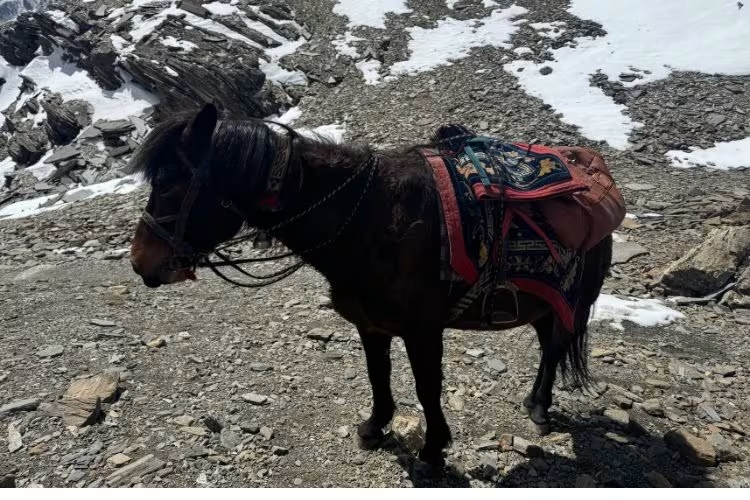


Day 9: Drive from Ngawal to Besisahar
Today involves a 7-hour off-road jeep drive from Ngawal (3,660 m) to Besisahar (760 m), covering 84.58 kilometers.
Overview
Start Point: Ngawal village
End Point: Besisahar
Route Breakdown: Ngawal to Koto to Dharapani to Ngadi to Besisahar
Meals Included: Not included (as per self-preference)
Drive Duration: Around 7 hours
Drive Distance: 84.58 Kilometers
Endpoint Altitude: 760 meters / 2,495 feet
Full Description
A short morning walk around Ngawal village is scheduled before departure. Ngawal, located at 3,660 meters, is known for its traditional Tibetan-style architecture and views of the Annapurna range.
The off-road jeep journey begins shortly after and follows a rugged route through Koto, Dharapani, and Ngadi. These villages are situated along the Marsyangdi River and are known for their stone-built houses and terraced fields.
The drive concludes in Besisahar, a bustling town at 760 meters, marking the end of the high-altitude segment of the journey.

Day 10: Drive from Besisahar to Kathmandu
Today includes a 8 hour drive from Besisahar to Kathmandu, following the same road as on Day 1.
Overview
Start Point: Besisahar
End Point: Kathmandu
Route Breakdown: Besisahar to Dumre to Kathmandu
Meals Included: Not included (as per self-preference)
Drive Duration: Around 8 hours
Drive Distance: 175 Kilometers
Endpoint Altitude: 1,300 meters / 4,265 feet
Full Description
The journey from Besisahar to Kathmandu follows the same route taken on Day 1. The drive spans approximately 175 kilometers and takes around 8 hours, depending on road conditions.
The route passes through Dumre and continues along the Prithvi Highway, offering views of terraced farmlands, subtropical forests, and scattered hillside settlements. The Marsyangdi River and Trishuli River accompany the road for much of the journey, gradually giving way to the urban outskirts of Kathmandu.
This drive marks the conclusion of the Nar Phu Valley trek. Upon arrival in Kathmandu, the group disbands, concluding the amazing horse riding expedition.

You don’t just ride a horse in the Himalayas — you ride through clouds, legends, and dreams.
The Nar Phu Valley Horse Riding Trek delivers a rare blend of high-altitude adventure, cultural immersion, and emotional fulfillment. You will ride across 77 kilometers of Himalayan terrain, ascend to Kang La Pass at 5,320 meters, and stay in Thrang Choephel Ling Monastery and visit historical Tashi Lhakhang Monastery.
The itinerary includes galloping in rugged trails, navigating narrow cliffside trails, and witnessing panoramic views of Annapurna Massif, Mt. Himlung, and Pisang Peak. The thrill of riding through alien-like landscapes and deep gorges carved by the Nar River creates a sense of raw adventure.
By the end, you will return to Kathmandu with adventurous memories and a deep connection to Nepal’s remote highlands.
Personalizing Your Nar Phu Horse Trek Itinerary
The itinerary above is a flexible starting point. We’ll create a customized horse riding program that fits your style whether you want to extend your adventure, merge routes, or adjust specific details.
Other Similar Trips
- Nepal’s Secluded Trail – Nar Phu Trekking Route & Itinerary : This is a 13-day journey which demands stamina as trekkers walk 6–7 hours daily across steep ascents and rugged trails. Unlike the horse-riding trek, which minimizes physical strain by covering most of the route on horseback, this trek offers a more challenging, foot-based adventure.
- Yoga Trek in Nar Phu Valley – 15 Days: Nar Phu Yoga Trek is a gentle, wellness-focused journey combining light walks with yoga and meditation, perfect for beginners and those seeking mindful experiences without strenuous effort.
- All Possible Nar Phu Valley Itineraries: It includes all the possible Nar Phu Valley programs such as short treks, easy-paced treks, camping options, and combined Annapurna Circuit and Manaslu Circuit treks. These trekking plans have been prepared to meet every client’s requirements, interests, and on the basis of our past inquiries.
Nar Phu Horse Riding Trail Map
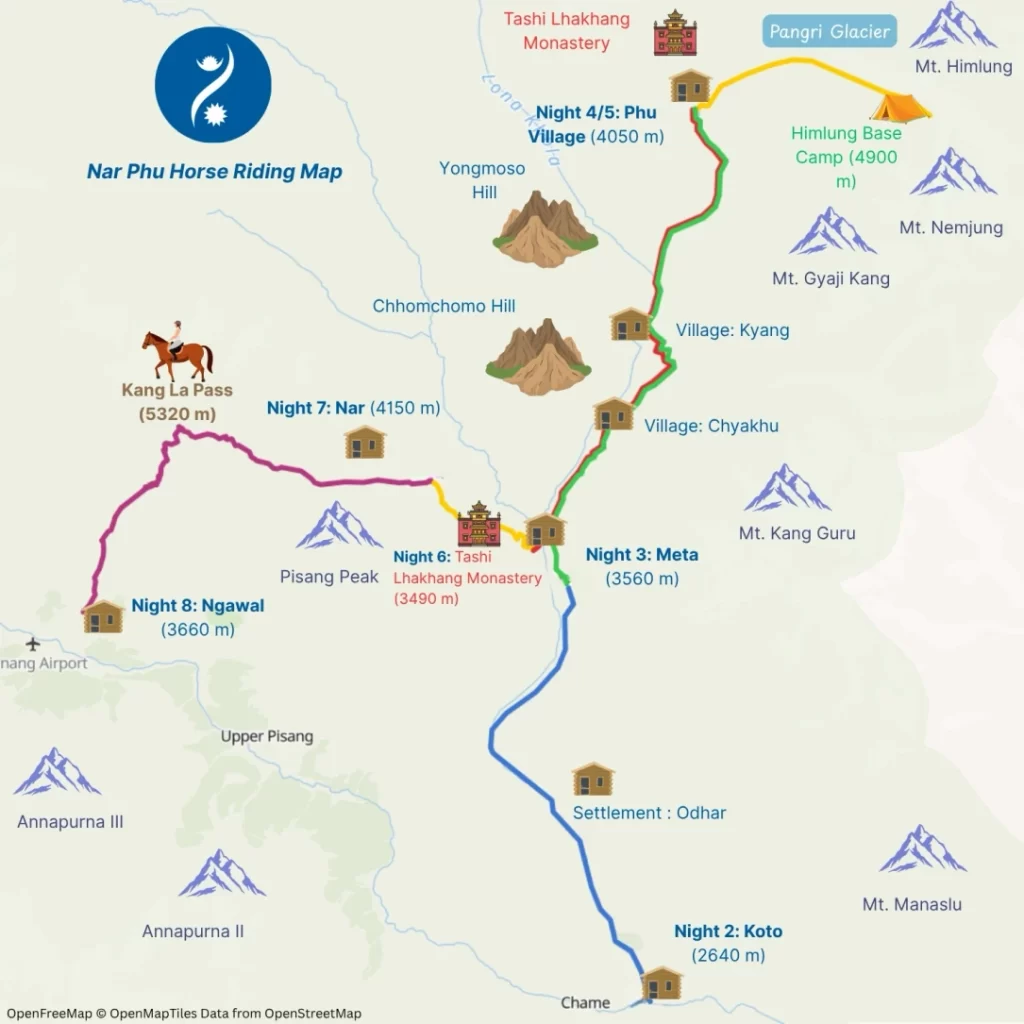
Cost Inclusion & Exclusion
Included Service & Amenities
- Local bus transfer Kathmandu to Besisahar / Besisahar to Kathmandu
- Local Jeep Transfer Besisahar to Koto/ Ngawal to Besisahar
- 9 Nights’ accommodation in Twin-sharing Basis in Mountain Lodges
- Horse riding for 6 days
- Local English-Speaking Guide for 10 days
- Horse Escorts
- Porter for 6 days
- Annapurna Conservation Area Permit
- Nar Phu Restricted Area Permit
- Trekking Map, Sun Hat, Duffel Bag
- Trip completion certificate
- Government Taxes
Excluded From The Package
- Meals (breakfast, lunch, and dinner) during the trek – you can order as per your own preference at the lodge
- Horse riding gear as mentioned in packing section
- Nepal on-arrival visa fee
- Travel insurance, including high-altitude emergency evacuation coverage
- Any beverages, including bottled or boiled water
- Tips for trekking staff and driver
- Personal trekking gear and equipment
- Helicopter cost for rescue
- Any expenses not mentioned in the above Includes section
Is Nar Phu Horse Riding Suitable for You?
Yes, this horse riding tour in Nar Phu Valley is suitable for three main groups of travelers:
- Professional riders: Experienced riders can ride independently. Horse escorts and guides provide navigation support and trail guidance, especially on narrow or high-altitude paths.
- First-time riders: Beginners receive continuous supervision and support from horse escorts and guides throughout the ride. No prior riding experience is required.
- People avoiding multi-day treks: The tour is designed for those who may find multi-day trekking difficult. Approximately 90% of the route is covered on horseback. However, on Day 9, participants must descend 5 hours on foot from Kang La Pass.
Additional Suitability Criteria
- Accommodation: Basic but clean. Rooms are well-maintained. Facilities such as heating, Wi-Fi, and room service are not available. Bathrooms are shared.
- Food & Dietary Options: Vegetarian and gluten-free meals are available. High-protein foods are not recommended at altitudes above 3,500m due to digestive strain risks.
- Age Requirement: There is no legal age restriction under Nepali law. However, company policy requires that children under 16 must be accompanied by a parent or guardian.
- Group Size: Flexible. Tours are organized for any group size, based on your preferences and logistical requirements.
This horse riding tour is an interesting alternative to traditional trekking for exploring Nar Phu Valley. The combination of horseback travel, accommodation, and dietary support makes it accessible to a wide range of travelers seeking a high-altitude Himalayan experience without trekking on foot.
Experience the Himalayas Without Long Hours of Trekking
Horseback riding allows travelers to explore Himalayan trails without trekking for hours. Remote regions like Nar Phu Valley are now accessible to riders of all skill levels. This method reduces physical strain while maintaining scenic and cultural immersion.
For beginners, guided horse riding offers a safe and gradual experience. Riders start slowly under supervision. As confidence builds, they may increase pace. Escorts ensure safety on uneven terrain. This makes the experience suitable for older adults and first-time visitors.
Horse riding in the Himalayas offers five key benefits:
- Reduced physical effort
- Access to remote trails
- Beginner-friendly guidance
- Freedom for skilled riders
- Scenic views without fatigue
Experienced riders can navigate narrow paths with guidance. On flat terrain, they may gallop freely. Escorts monitor safety throughout the ride. This flexibility allows skilled riders to enjoy the thrill while maintaining control and comfort.
Why Choose Travel To Nepal for Himalayan Horse Riding?
Travel to Nepal is the first licensed company to offer horse riding tours in Nar Phu Valley, combining local expertise, permit handling, and personalized itineraries.
Key Advantages of Choosing Travel to Nepal:
- Local Expertise: We employ horse escorts from Nar Phu Valley who are experienced in high-altitude riding and trail safety. Their local knowledge ensures efficient navigation and cultural immersion.
- Experienced Guides: Each guide has over 8 years of experience and has completed more than 150 Himalayan treks, including high-altitude and remote routes.
- Permit Handling: We manage all required permits, including ACAP and Nar Phu Restricted Area, using an in-house logistics team to ensure fast and hassle-free processing.
- Custom Itineraries: Itinerary is customized to match your fitness level, altitude readiness, and travel goals. This ensures a safe and enjoyable experience for all rider profiles.
- 24/7 Support: Our team is available via WhatsApp and email before, during, and after your trek for real-time assistance.
- Responsible Tourism: We ensure fair wages for guides and local suppliers, supporting sustainable tourism in the region.
- Transparent Pricing: All costs are disclosed upfront. There are no hidden fees or forced add-ons.
- Accommodation Selection: Lodging is chosen based on hygiene standards, comfort, and proximity to trail highlights, ensuring restful stays throughout the journey.
We offer a rare combination of local knowledge, logistical efficiency, and ethical practices. Whether you’re a seasoned rider or a first-time adventurer, our horse riding tours in Nar Phu Valley are designed to deliver a safe, immersive, and memorable Himalayan experience.
Horse Handling on the Nar Phu Valley Trail
Horse handling on the Nar Phu Valley trail requires terrain-specific strategies to ensure safety and horse welfare. Riders must avoid galloping on narrow paths, dismount during steep descents, and monitor horse fatigue during long riding days. With proper pacing, regular breaks, and attention to trail conditions, horses can navigate the valley efficiently and safely.
40% of the Nar Phu Valley trail consists of narrow paths, with several segments permitting only single-horse passage. In these areas, riders must avoid fast walking or galloping to prevent imbalance and reduce the risk of injury. Narrow trail sections, especially those with cliff-side exposure, require slow, controlled movement to maintain horse stability.
Steep descents, such as those found on Kang La Pass and a 200 meter section near Himlung Base Camp, require riders to dismount. This practice reduces strain on the horse and improves safety for both rider and animal. On gradual slopes, riding is generally safe and dismounting is not necessary.
Ascents along the Nar Phu trail are manageable for horses, and riders typically remain mounted. However, terrain conditions may vary seasonally, and riders should assess footing before proceeding.
Horses can walk comfortably for up to 6.5 hours with regular breaks. On flat terrain, galloping is possible, but only in short bursts.
Monitoring horse condition is essential. Signs of fatigue include slowed pace, irregular steps, and excessive sweating. Riders are requested to adjust their pace and rest intervals based on the terrain and the horse’s response to ensure the well-being of the horse.
Key Points to Know Before Horse Riding in Nar Phu Valley
Horse riding in Nar Phu Valley requires terrain awareness, permit compliance, and safety protocols. Riders must prepare for varied trail conditions, including gradual slopes, steep ascents, and descents.
Some of the important things to consider before horse riding in Nar Phu Valley are:
- Trail Conditions: Riders should be aware of the terrain. It includes gradual slopes, steep ascents, or descents. During steep descents, riders are usually required to dismount for safety. During ascents, riders can typically remain mounted.
- Horse Escort Support: On narrow trails, experienced riders are guided by horse escorts who lead the group and assist with navigation. Beginner riders receive continuous supervision from horse escorts to ensure a safe and comfortable experience.
- Comfort in Horse Riding: Long rides may cause back pain, especially for beginners. To minimize discomfort, frequent rest breaks are scheduled for first-timers throughout the trail.
- Risk of injury: The risk of injury is low if riders follow the instructions of the horse escorts and guides.
- Required Permits: Annapurna Conservation Area Permit (ACAP) and Restricted Area Permit (RAP). The latter must be applied by a registered trekking agency as individual applications are not accepted
- Licensed Guide Requirement: According to Nepal Government regulations, non-Nepalese riders must be accompanied by a licensed guide in Nar Phu Valley.
- Minimum Group Size: The Department of Immigration requires a minimum of two foreign trekkers to apply for the Restricted Area Permit.
- Emergency Situations: In case of serious emergencies, helicopter rescue is the only viable option, as vehicles cannot reach the inner valley. Rescue costs can exceed $4,000 USD, so comprehensive travel insurance is strongly recommended.
- Cultural Sensitivity: Nar Phu is home to Buddhist communities. Visitors must respect local customs: avoid loud behavior near monasteries, do not disturb wildlife, refrain from using inappropriate language or gestures, and respect cultural norms
- Local Vehicle Transfers: Local jeep transfers are included for road transfer. Private jeeps can be requested for added comfort at an additional cost.
- Meals: Meals are not included in the trek package. This allows you to choose meals from lodge menus based on personal preferences, dietary needs, and budget.
Horse riding in Nar Phu Valley involves navigating diverse terrain, complying with permit and guide regulations, and following safety protocols. With proper preparation, escort support, and cultural sensitivity, riders can enjoy a safe and enriching experience in one of Nepal’s most remote regions.
What Are the Best Places for Horse Riding in Nar Phu Region?
Almost every part of the Nar Phu trail offers something unique for horse riders. Based on terrain suitability, scenic beauty, and the thrill of adventure, here are the top segments for horse riding in the region:
- Tatopani Gorge Area: This dramatic section of the trail features towering cliffs, rustling rivers, and dense forests. Riders are treated to views of Kang Guru mountain and the unique topography of the Himalayas. It’s often the first place where riders feel the distinct character of the Nar Phu region.
- Meta to Chyakhu Village: This stretch offers wide, open trails that are ideal for relaxed riding. The terrain is gentle, allowing riders to enjoy the journey without worrying about narrow paths. The views of Pisang Peak, Kang Guru, and the rugged Chhomchomo highlands add to the scenic experience.
- Chyakhu Village: Chyakhu features a flat, open area that is perfect for beginners to try galloping under the supervision of horse escorts. The terrain here is safe and welcoming, making it a great spot to build confidence in riding.
- Kyang to Phu Village: This segment is narrow and exposed, with cliffs on one side, offering a thrilling sense of adventure. With guidance from our horse escorts, riders can safely navigate this section and enjoy the dramatic landscape and remote beauty of the region.
- Himlung Base Camp: The trail to Himlung Base Camp ascends gradually and remains wide, making it suitable for horse riding. Riders get close-up views of the Himalayas and the Pangri Glacier, which runs alongside the trail, offering a breathtaking experience.
- Nar Village: Just behind Nar Village lies a wide, flat area ideal for horse riding. Experienced riders can enjoy galloping freely, while beginners are guided safely by horse escorts. The open terrain and peaceful surroundings make this a favorite spot for many.
- Kang La Pass: The ascent to Kang La Pass is the highest point of the horse riding trek. It offers panoramic views of the Annapurna and Manaslu ranges and features unique high-altitude terrain. This segment combines challenge with reward, making it a memorable part of the journey.
Horse riding in the Nar Phu Valley is a diverse experience. From beginner-friendly plains to cliffside trails and glacier views, the region provides a structured and unique equine experience.
Typical Day on This Equestrian Trek in the Himalayas
Each day of the Nar Phu equestrian trek begins at 6:00 AM, following a structured schedule designed to balance riding activity with rest and cultural immersion.
Daily Schedule
- 06:00 AM: Wake-up and breakfast at the lodge
- 07:00 AM: Begin horse riding
- Every 35 minutes: Scheduled rest breaks lasting 5–10 minutes
- 11:30 AM: Lunch stop at a local village such as Meta or Chyakhu
- 02:00 PM: Arrival at the day’s destination
- Afternoon: Rest or optional activities (e.g., monastery visits, village walks)
Horse riding hours are limited to 5–6 hours per day, depending on trail and weather conditions. Evenings are reserved for rest and light exploration. Riders may walk through nearby villages, interact with locals, or prepare for the next day’s ride.
The itinerary is prepared for rider comfort, horse welfare, and terrain responsiveness, ensuring a safe and enriching experience in the Himalayas.
Health Precautions and Safety Advice during the Horseback Trek
Safety Measures & Protocols
Rider safety is ensured through gear, guidance, and trail briefings.
Before the ride starts in Koto, the guide gives a short safety briefing. Riders learn about the trail, the riding plan, and how safety will be managed. They also hear about possible challenges and how to handle them. This helps riders feel ready and stay safe.
All riders must wear basic horse-riding gear. This includes a helmet, gloves, and low-heeled boots. These items help prevent injuries.
Our horse escort will lead the way along narrow trails while navigating the route for riders. Especially for beginners, the escort will continuously guide the horse and teach the rider safe riding techniques for the Himalayas.
Altitude Sickness & Medical Support
Altitude sickness happens when the body doesn’t adjust to low oxygen levels above 2,500 meters. The main cause is ascending too fast without enough time to acclimatize. Common symptoms include headache, nausea, dizziness, fatigue, and shortness of breath.
Our itinerary is designed to reduce the risk of AMS. The ascent is slow and steady. Riders get a full day to acclimatize on Day 5 to prepare for the highest point reached on Day 8.
To handle altitude sickness, scientific studies (Hackett & Roach, New England Journal of Medicine, 2001) recommend:
- Climb slowly and avoid sudden altitude gains.
- Drink enough water and eat light meals.
- Use acetazolamide (Diamox) if your doctor recommends it.
- Go down quickly if symptoms get worse.
Our guides are experienced in high-altitude safety and AMS protocols. They carry pulse oximeters to monitor oxygen levels and can provide first-aid medication when necessary. In case of worsening symptoms, the team will arrange an immediate descent, and helicopter evacuation can be organized from Nar Phu Valley if required.
We also strongly recommend that all riders have travel insurance covering high-altitude rescue and emergency evacuation for complete peace of mind.
Cleanliness & Personal Hygiene
Maintaining good cleanliness and personal hygiene is essential to staying healthy during your horse riding trip. The high altitude, cold temperatures, and limited facilities can make hygiene challenging, but a few simple habits can help prevent illness.
- Use biodegradable wet wipes when showers aren’t available.
- Always use designated toilets.
- Carry biodegradable toilet paper or wipes.
- Drink only purified water: use filters, iodine tablets, or boil it.
- Eat freshly cooked meals.
- Avoid raw vegetables and unpeeled fruits.
- Female riders should carry sanitary pads or menstrual cups.
- Carry a small trash bag for non-biodegradable waste.
- Follow the “Leave No Trace” principle to protect the Himalayan environment.
Cleanliness is not just personal. It helps keep the journey safe & enjoyable for everyone.
Skin Care & Sun Protection
UV radiation increases by 10–12% for every 1,000 meters of elevation gain. At 5,320 meters, this results in approximately 53–64% more UV exposure compared to sea level. Combined with cold winds and low humidity in the Himalayas, this elevation can cause dryness, windburn, and sunburn.
There are 3 effective ways to prevent windburn and dryness at high altitudes:
- Apply barrier creams and moisturizers with ceramides or hyaluronic acid (e.g., CeraVe, Eucerin) every 4–6 hours.
- Wear windproof and insulated clothing, especially around the face and neck.
- Use humidifiers or hydration masks in indoor settings to combat low humidity.
How to Choose the Best Sunscreen?
SPF 50–100+ broad-spectrum sunscreen is essential at 5,000+ meters altitude.
- Choose water-resistant formulas with zinc oxide or titanium dioxide for better durability.
- Reapply every 2 hours, or immediately after sweating or wiping the face.
- Avoid scented or alcohol-based sunscreens, which can irritate dry skin.
Insurance & Coverage
Comprehensive travel insurance is required for the Nar Phu Valley trek. We do not provide insurance, so trekkers must arrange their own.
Recommended Coverage Includes:
- High-altitude trekking (up to 6,000 meters)
- Emergency evacuation and helicopter rescue
- Medical expenses and hospitalization
- Trip cancellation or delay protection
Packing List for Your Himalayan Horse Riding Trek
🧥 Clothing & Layers
- 2 Moisture-wicking base layers (top & bottom)
- 1 Insulating mid-layer (fleece or down jacket)
- 1 Waterproof & windproof outer shell (jacket & pants)
- 2 Comfortable riding pants (stretchable, durable)
- 3-4 Thermal underwear (for cold nights)
- 2 Lightweight trekking shirt (long-sleeved for sun protection)
- 1 Warm hat/beanie & sun hat with brim
- 1 Buff or neck gaiter
- 1 pair of Gloves (riding gloves + insulated gloves for evenings)
- Wool or synthetic socks (3–4 pairs)
- 1 Camp shoes or sandals
- Light crampons for Kang La Pass descent
- Photochromic Sunglasses
🐎 Riding & Trekking Gear
- Helmet
- Riding boots (with heel, suitable for walking too)
- Saddle bags or daypack (for personal items)
- Rain poncho
- Trekking poles for Kang La Pass descent
- Lightweight sleeping bag (rated to -10°C if camping)
- Headlamp with extra batteries
🧼 Personal Items & Toiletries
- Biodegradable soap & shampoo
- Toothbrush & toothpaste
- Quick-dry towel
- Lip balm with SPF
- Sunscreen (SPF 50+)
- Wet wipes & hand sanitizer
🩺 Health & Safety
- Personal first-aid kit (include altitude meds if needed)
- Diamox (consult your doctor before use)
- Water purification tablets or filter
- Electrolyte sachets
- Blister care (Compeed, tape)
- Insect repellent
- Emergency whistle
📄 Documents & Money
- Passport & visa copies
- Travel insurance (with horse riding & high-altitude coverage)
- Cash in local currency (for remote areas)
- Emergency contact list
🔌 Electronics & Accessories
- Power bank (solar recommended)
- Charging cables & adapters (Nepal uses Type C/D/M)
- Camera or smartphone
- GPS or offline maps app
- Extra memory cards
Horse Riding Support Staff
We provide experienced horse escorts and licensed guides who have extensive knowledge of Nar Phu Valley’s terrain and cultural heritage. They handle horse care, navigation, and rider assistance throughout the trek. Furthermore, they lead horses on narrow trails, manage pacing, and monitor horse welfare. Guides also handle permits, safety briefings, and cultural interpretation during monastery visits.
Riders must show respect and follow the instructions of guides and horse escorts for safety and harmony. This includes paying attention during trail briefings, cooperating on steep descents, and adhering to cultural norms in villages and monasteries. Courtesy and respect ensure a smooth and enjoyable journey.
Tipping is customary. Recommended amounts:
- Around USD 15 per day for guides
- Around USD 10 per day for horse escorts
- USD 5 per day for porters
Guests can collect these amounts as a group. We recommend you give tips directly to each staff member at the end of the trek.
Frequently Asked Questions
Is a guide mandatory for Nar Phu Valley Horse Riding Trek?
Yes, a licensed guide is required by Nepalese law for all foreign travelers in restricted areas.
What villages are visited during the trip?
Key villages include Koto, Meta, Chaykhu, Kang, Phu, Nar Phedi, Nar, and Ngawal, each showcasing Himalayan Buddhist culture.
Is horse riding possible throughout the trek?
Horse riding is possible on most parts of the trek. However, you’ll need to walk during steep descents like Kang La Pass and a short section while returning from Himlung Base Camp.
Do you need a special permit for Nar Phu Valley?
Yes, trekkers need Restricted Area Permits (RAP) for Nar and Phu villages, along with Annapurna Conservation Area Permit (ACAP).
What is the best season for Nar Phu Valley Horse Riding Trek?
The best seasons are spring (Mid-February to May) and autumn (October to November) for clear skies and stable weather.
Which horses are used for horse riding in Nar Phu Valley?
Local Pony horses, often Mongolian or Tibetan breeds, are used for their endurance in high-altitude conditions.
Are there tea houses in Nar Phu Valley?
Yes, there are basic tea houses in Nar and Phu villages, but facilities are basic, including simple beds.
Is Nar Phu Valley suitable for photography?
Yes, Nar Phu Valley offers spectacular landscapes, ancient architecture, and cultural portraits, ideal for photography enthusiasts.
What is the distance covered in Nar Phu Valley Horse Riding Trek?
The horse riding trip covers approximately 77 kilometers over the course of 6 days.
Are there risks of altitude sickness in Nar Phu Valley?
Yes, altitude sickness is a major risk above 3,500 meters. Our itinerary includes gradual ascent and acclimatization to minimize the risk as much as possible.
Can you combine Nar Phu Valley Horse Riding with Annapurna Circuit trail ?
Yes, we can combine Nar Phu Valley with Annapurna Circuit via Kang La Pass for an extended horse riding adventure.
Are horses safe for high-altitude trekking?
When handled responsibly, horse riding in the Himalayas is safe and enjoyable for both riders and horses. Local horses are well adapted to the high-altitude terrain of the Himalayas. Riders should always follow safety practices, especially on narrow trails, and avoid overexerting the horses.
What is the weather like in Nar Phu Valley?
At high altitudes, the weather is typically cold and dry, with nighttime temperatures often dropping below freezing. You should also be prepared for snowfall in higher elevations such as Nar, Phu, Himlung Base Camp, and Kang La Pass.
Why choose horse riding in Nar Phu Valley?
Horse riding offers greater comfort, reduced fatigue, and a unique cultural experience. It’s ideal for experienced riders and for those who prefer to enjoy the journey without the physical strain of long trekking days.
What is the elevation gain during Nar Phu Valley Horse Riding Trek?
The trek involves an elevation gain of roughly 3,000 meters, starting from Koto at 2,600 meters and reaching Kang La Pass at 5,320 meters.
Are there mobile networks in Nar Phu Valley?
Mobile coverage is available in villages and settlements, but not along most sections of the trail. In some cases, network service may also be disrupted due to weather conditions or other unforeseen circumstances.
Can riders gallop during the trek?
Galloping is possible only on flat terrain, such as the gradual ascent from Meta to Chyakhu, the open areas around Himlung Base Camp, the flatlands of Chyakhu, and the plains near Nar Village.
